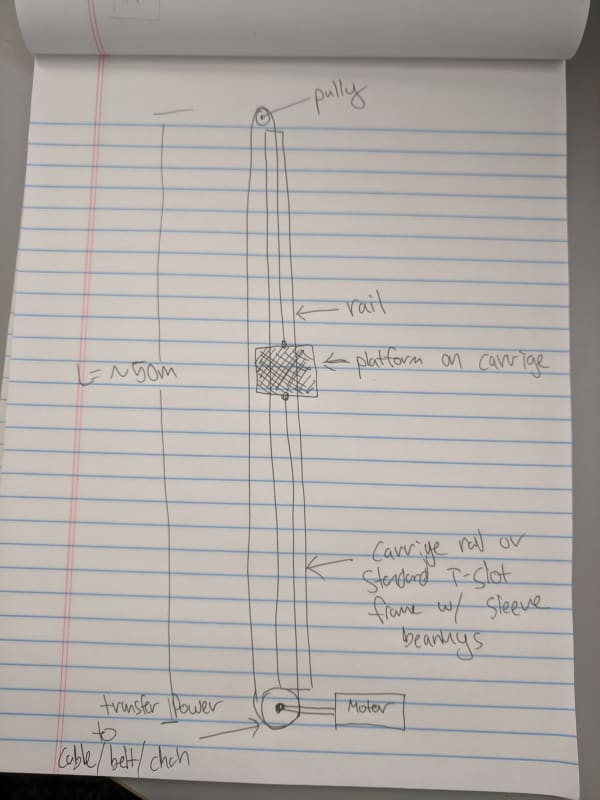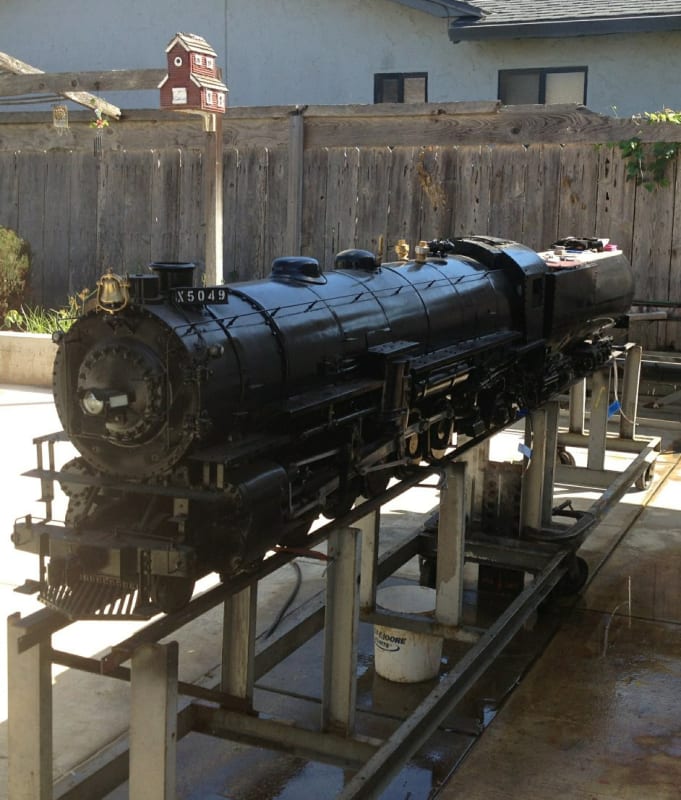Hello,
I am working on a target system that needs to move lineally and have a few things I would like to ask the community about.
Attached is a simple diagram of the system but it is basically a cart that attaches to a rail using a carriage ( either roller bearing carriage or sleeve bearings). To move the carriage my idea is to have a cable, belt or chain attached to either side of the carriage and a motor spinning this power transfer device at one end and a free spinning pully at the other. This rail will likely need to be pretty long 50-100 feet and the implications of that are what drive most of my questions below.
Questions:
1. The best power transfer device. I feel a cable seems the easier at this length as I am not aware of belts this long and chains seem heavy and unnecessary
1a. If I use a steel cable what's a good way of transferring power from motor to cable without slippage ect. I
imagine some wheel with a grippy surface to grab the cable but am curious if anyone knows of anything
already out in the market
2. Anyone have experience using sleeve bearings on a standard T-slot fittings as these allows me to use cheap and already long chunks of T-slot fittings from mcmaster ?
3. Any additional comments on design or good starting point for motor to use for this application
I am working on a target system that needs to move lineally and have a few things I would like to ask the community about.
Attached is a simple diagram of the system but it is basically a cart that attaches to a rail using a carriage ( either roller bearing carriage or sleeve bearings). To move the carriage my idea is to have a cable, belt or chain attached to either side of the carriage and a motor spinning this power transfer device at one end and a free spinning pully at the other. This rail will likely need to be pretty long 50-100 feet and the implications of that are what drive most of my questions below.
Questions:
1. The best power transfer device. I feel a cable seems the easier at this length as I am not aware of belts this long and chains seem heavy and unnecessary
1a. If I use a steel cable what's a good way of transferring power from motor to cable without slippage ect. I
imagine some wheel with a grippy surface to grab the cable but am curious if anyone knows of anything
already out in the market
2. Anyone have experience using sleeve bearings on a standard T-slot fittings as these allows me to use cheap and already long chunks of T-slot fittings from mcmaster ?
3. Any additional comments on design or good starting point for motor to use for this application



